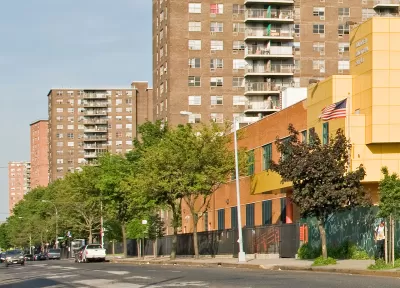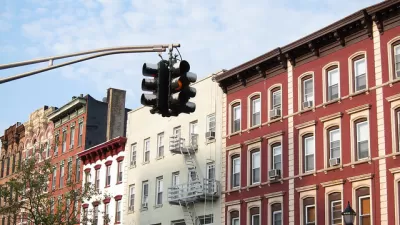The 2017 "Worst Case Housing Needs" report paints a dire picture of the nation's low-income housing options, as the Trump Administration proposes drastic cuts to federal housing programs.

"The number of poor families struggling to pay their monthly rents or living in deplorable accommodations has grown 41 percent since the beginning of the Great Recession a decade ago," reports Tracy Jan.
That information comes from a recent report by the U.S. Department of Housing and Urban Development—the department's biennial assessment of "worst case housing needs."
"More than 8.3 million very low-income households in 2015 qualified for, but did not receive, federal housing assistance because there is not enough to go around," adds Jan to explain the reports findings.
"The report blamed growing competition for a shrinking supply of affordable residences for the increase, a result of declining homeownership and rising rents, in addition to a widening gap between the number of renters in need and the availability of federal assistance."
As Jan reported in an earlier article in May (and picked up by Planetizen via another article from The Washington Post), the Trump Administration's budget blueprint "calls for the most dramatic cuts to the Department of Housing and Urban Development since President Ronald Reagan slashed the agency’s funding in the early 1980s." The budget proposal, which is still far from a political reality, also "leaves a wide opening for introducing work requirements for people who receive federal housing subsidies."
FULL STORY: Millions of poor families could benefit from housing aid Trump wants to cut

Alabama: Trump Terminates Settlements for Black Communities Harmed By Raw Sewage
Trump deemed the landmark civil rights agreement “illegal DEI and environmental justice policy.”

Planetizen Federal Action Tracker
A weekly monitor of how Trump’s orders and actions are impacting planners and planning in America.

Why Should We Subsidize Public Transportation?
Many public transit agencies face financial stress due to rising costs, declining fare revenue, and declining subsidies. Transit advocates must provide a strong business case for increasing public transit funding.

Understanding Road Diets
An explainer from Momentum highlights the advantages of reducing vehicle lanes in favor of more bike, transit, and pedestrian infrastructure.

New California Law Regulates Warehouse Pollution
A new law tightens building and emissions regulations for large distribution warehouses to mitigate air pollution and traffic in surrounding communities.

Phoenix Announces Opening Date for Light Rail Extension
The South Central extension will connect South Phoenix to downtown and other major hubs starting on June 7.
Urban Design for Planners 1: Software Tools
This six-course series explores essential urban design concepts using open source software and equips planners with the tools they need to participate fully in the urban design process.
Planning for Universal Design
Learn the tools for implementing Universal Design in planning regulations.
Caltrans
Smith Gee Studio
Institute for Housing and Urban Development Studies (IHS)
City of Grandview
Harvard GSD Executive Education
Toledo-Lucas County Plan Commissions
Salt Lake City
NYU Wagner Graduate School of Public Service





























